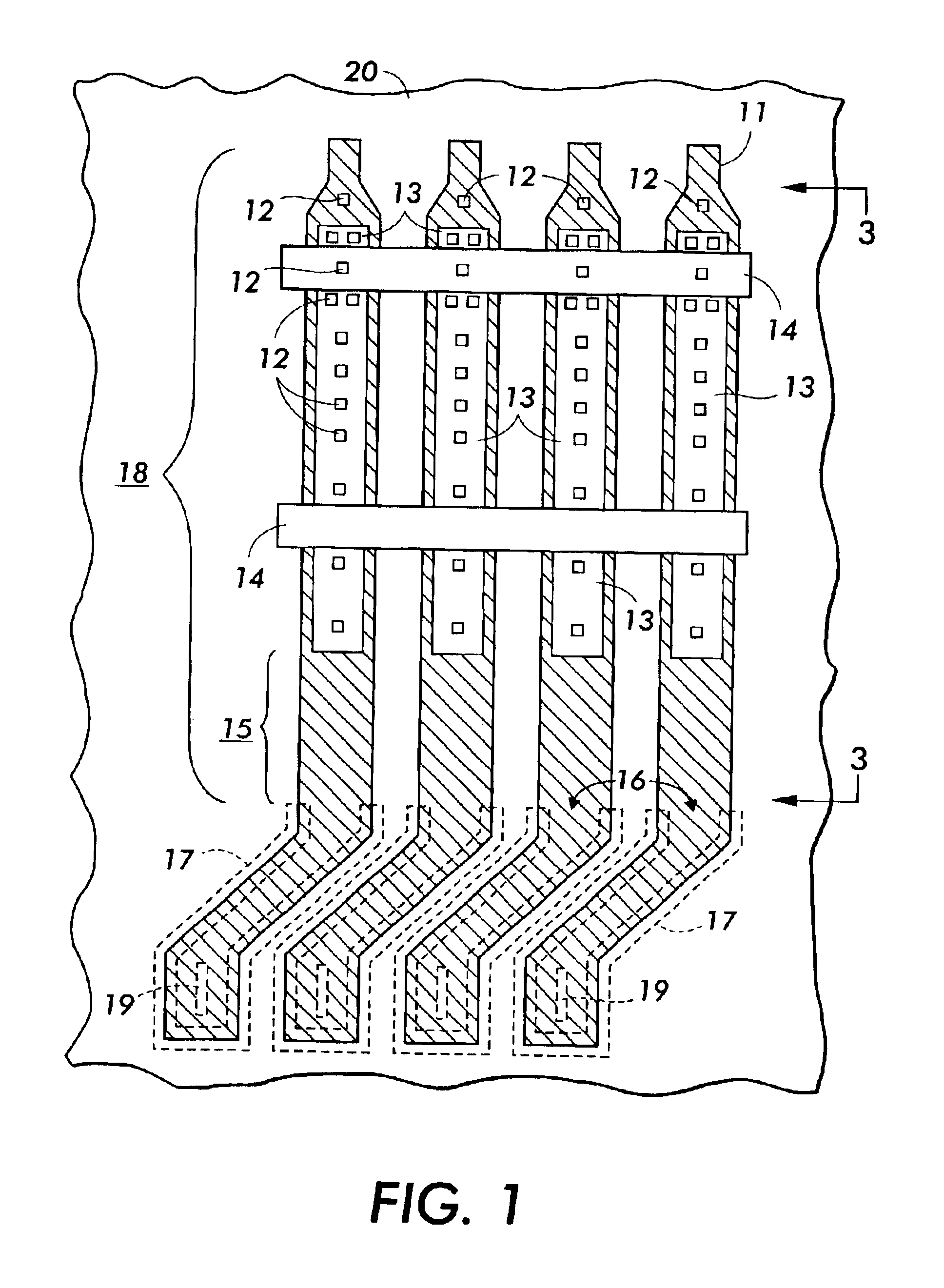Method of forming an out-of-plane structure
a micro-device and out-of-plane technology, applied in the direction of printed element electric connection formation, chemical vapor deposition coating, fluid speed measurement, etc., can solve the problems of insufficient stiff fingers to be pulled around by the air-liquid interface, increase the problem, and increase the problem. , to achieve the effect of stiffening the structure, maintaining spacing and separation, and effectively stiffening the structur
- Summary
- Abstract
- Description
- Claims
- Application Information
AI Technical Summary
Benefits of technology
Problems solved by technology
Method used
Image
Examples
Embodiment Construction
The methods and structures of the invention employ some of the same techniques disclosed in the '815 application and the '262 application as well as the techniques used to make springs as disclosed in coassigned U.S. Pat. Nos. 5,613,861, 5,848,685 and 5,914,218. Springs are made by introducing an intrinsic stress profile of a certain amount designed to produce the desired spring height and curvature. Similarly, as disclosed in the '815 and '262 applications, a reproducible built-in stress gradient or intrinsic stress profile can be designed into a thin film by varying the growth conditions appropriately during deposition to produce coil structures, i.e., a released elastic member which bends back on itself producing a loop winding and contacting the substrate. By using or adding one or more conductive layers, a coil structure suitable for use as an inductor or a transformer may be manufactured.
Referring to FIGS. 1 and 3, a release layer 10 such as Ti, Si, or SiN is patterned on subs...
PUM
| Property | Measurement | Unit |
|---|---|---|
| Electrical conductivity | aaaaa | aaaaa |
| Electrical conductor | aaaaa | aaaaa |
| Stress optical coefficient | aaaaa | aaaaa |
Abstract
Description
Claims
Application Information
 Login to View More
Login to View More - R&D
- Intellectual Property
- Life Sciences
- Materials
- Tech Scout
- Unparalleled Data Quality
- Higher Quality Content
- 60% Fewer Hallucinations
Browse by: Latest US Patents, China's latest patents, Technical Efficacy Thesaurus, Application Domain, Technology Topic, Popular Technical Reports.
© 2025 PatSnap. All rights reserved.Legal|Privacy policy|Modern Slavery Act Transparency Statement|Sitemap|About US| Contact US: help@patsnap.com



